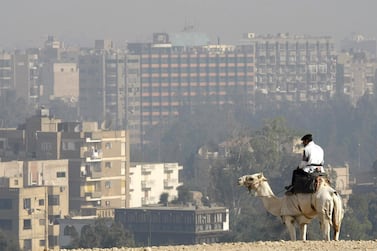“Before there was nothing, nothing at all,” says Wilfred Bamba, gesturing to the thickets of surrounding mangrove forest that knot and tangle together as far as the eye can see.
“But each year we have been planting more and more.”
Navigating through claustrophobic, narrow passages of mangrove in his wooden pirogue boat, Mr Bamba, a 32-year-old fisherman from the tiny village of Eloubalir in southwestern Senegal, has come to love these jungles on water. Perched above the water surface on natural stilts that resemble hunched crab legs, they have revitalised the region.
“We use the wood to build our homes, we harvest the oysters that grow on them, and they protect our village from the wind because if a strong gust comes it could blow take away everything,” said Bamba.
Since he was a young boy, however, the tropical shrub had been on a near terminal decline. Mangroves are some of the richest ecosystems in the world, but over the past few decades they’ve been shrinking in Senegal.
A quarter of the total estimated surface area of mangroves in the country – thought to be around 45,000 hectares – have been lost since the 1970s due to a combination of deforestation for timber, drought brought on by global warming and the blockage of waterways by road building.
It’s been a huge challenge to indigenous communities, who rely on a mangrove’s special ability to consume saline water and later produce fresh water. They crucially act as filtration systems allowing other produce such as rice to grow. When waters become too salty, crops die.
In Senegal, which has 500km of Atlantic coastline, mangroves also play an important role in the defence against climate change, counteracting the pressure on receding shorelines. According to projections by the UN, as many as 200 million people around the world could be displaced due to shoreline erosion, coastal flooding, and agricultural disruption by 2050.
But that problem was recognised by Senegal’s former environment minister Haidar El Ali, who set up a non-profit organisation called Oceanium to tackle the problem. It has largely been a grassroots movement whereby local villagers have been trained and paid to plant mangrove seeds in their own regions.
The mangrove replantation project has spanned from the northern city of Saint-Louis to Senegal’s capital Dakar and towards the southerly regions of Sine-Saloum and Casamce and covered 350 local villages. Roughly 150 million mangrove trees have since been replanted, the equivalent of 15,000 hectares, since 2006, making it the largest replantation of mangroves in the world.
“Africa isn’t responsible for climate change and this transformation of the planet,” said Mr Ali at his large thatched home off a dusty road a few kilometres away from the Casamance city of Ziguinchor.
“That’s why it’s so important get these communities involved in the process and have them driving the work for their own benefit. It’s giving them the power back.”

Oceanium’s project has been hailed as revolutionary and has to date provided more than 100,000 Senegalese with work and greater livelihood security. The mangroves act as huge carbon stores in the battle against climate change, stocking an estimated 500,000 tonnes of CO2 over the project’s 20-year lifespan and will also provide 18,000 tonnes of fish, shrimps, oysters, and molluscs that thrive in the habitats created by the mangrove ecosystem.
“Coastal nations around the world will be looking at the success of this mangrove plantation project as a blueprint,” said Boubou Aldiouma Sy, a professor of geography at Senegal’s Gaston Berger University. “The effects of climate change are already very real in some parts of the globe, and mangroves have proved to be an incredible solution.”
The challenge that remains for Oceanium, however, is sustained funding. The non-governmental organisation (NGO) initially received support from French multinational food products company, Danone, and subsequently from the Paris-based Livelihoods Fund, but it is currently short of the €800,000 (Dh3.3 million) required for the next stage of the project in August.
Despite these difficulties the project, much like the mangroves themselves, has sprawled and spread to new ground, in the processing transforming lives.
“Before we were desperate and felt out of control of our lives,” says fisherman Bamba. “But now at least we have hope.”






